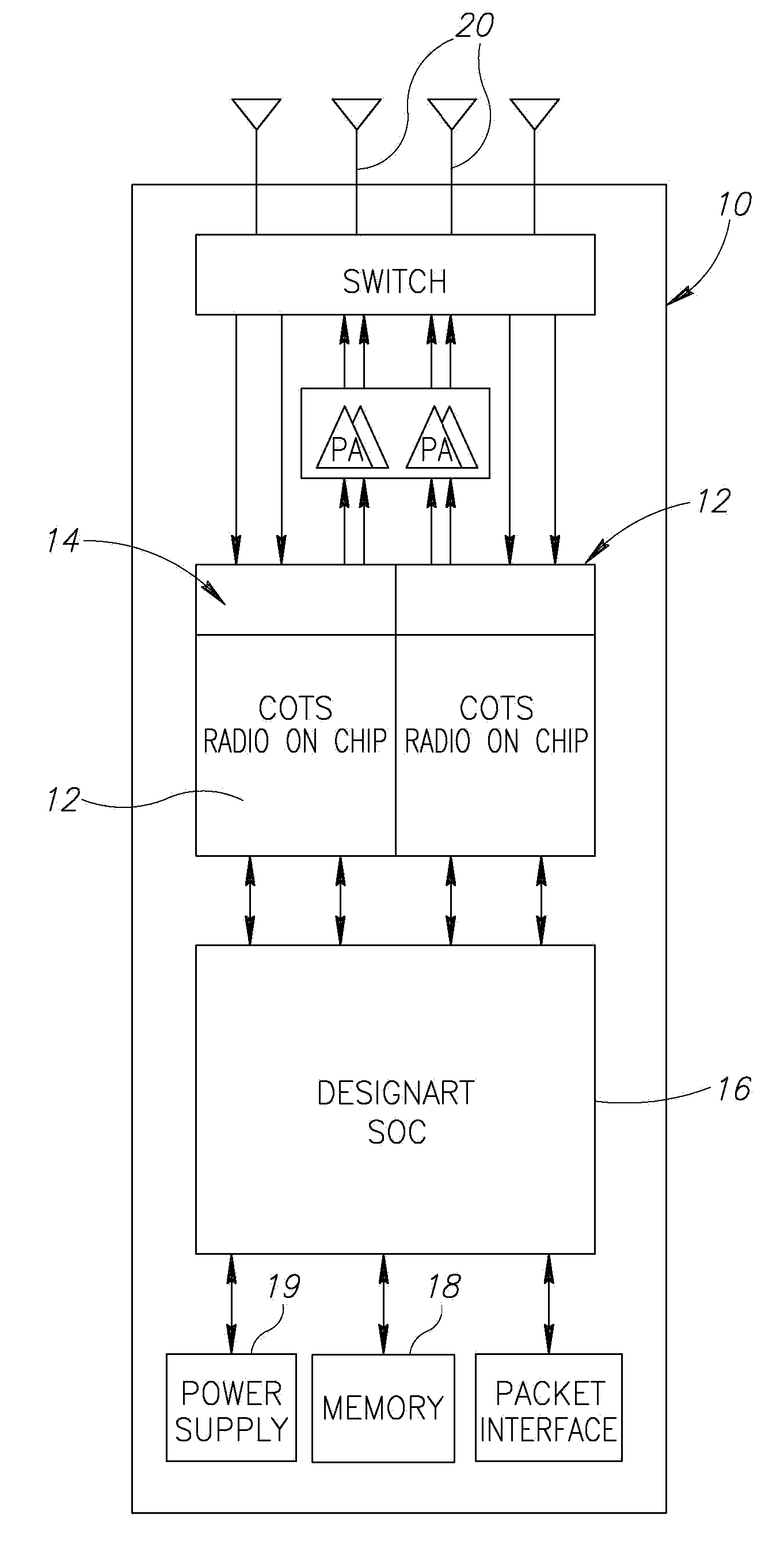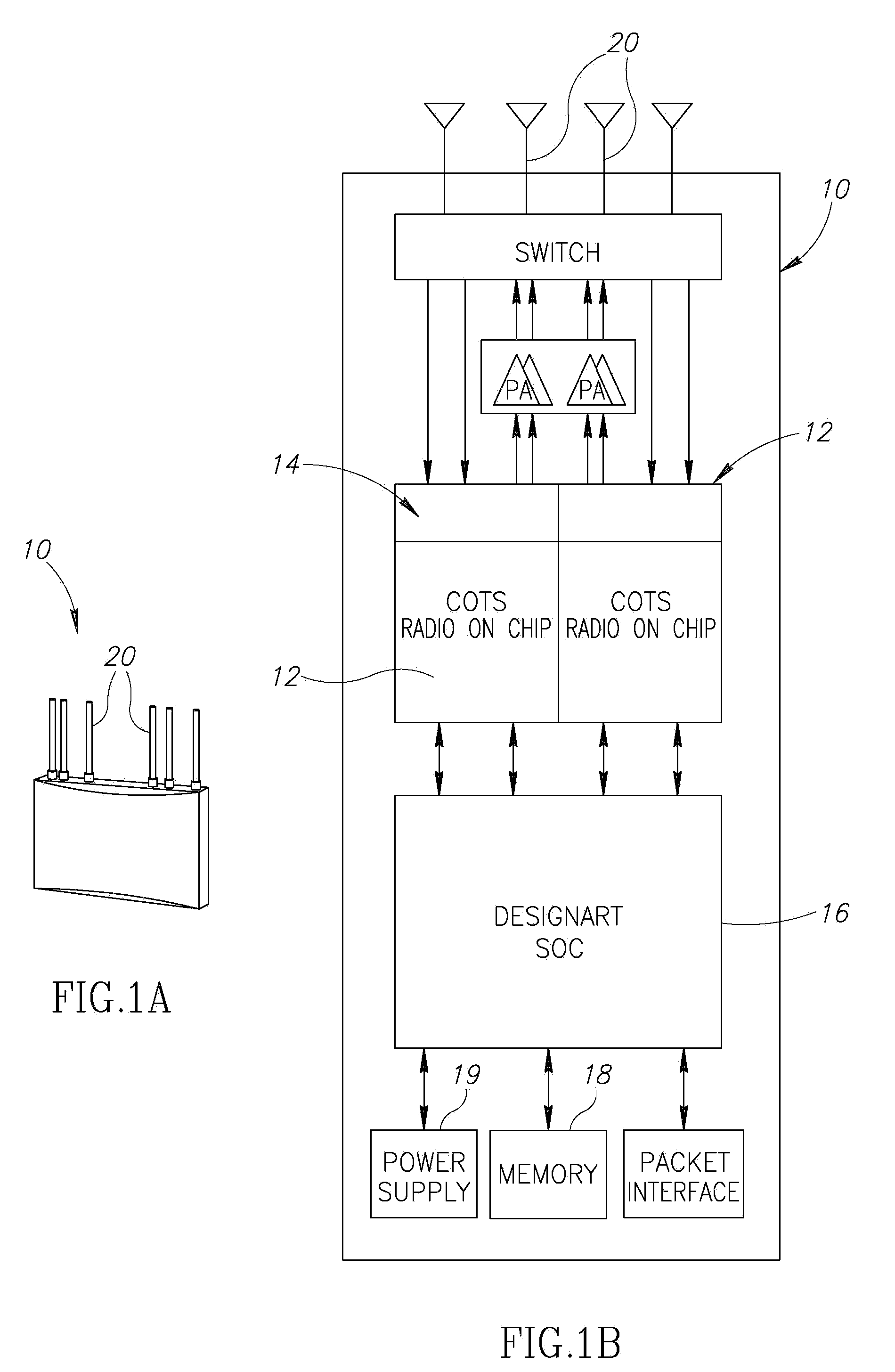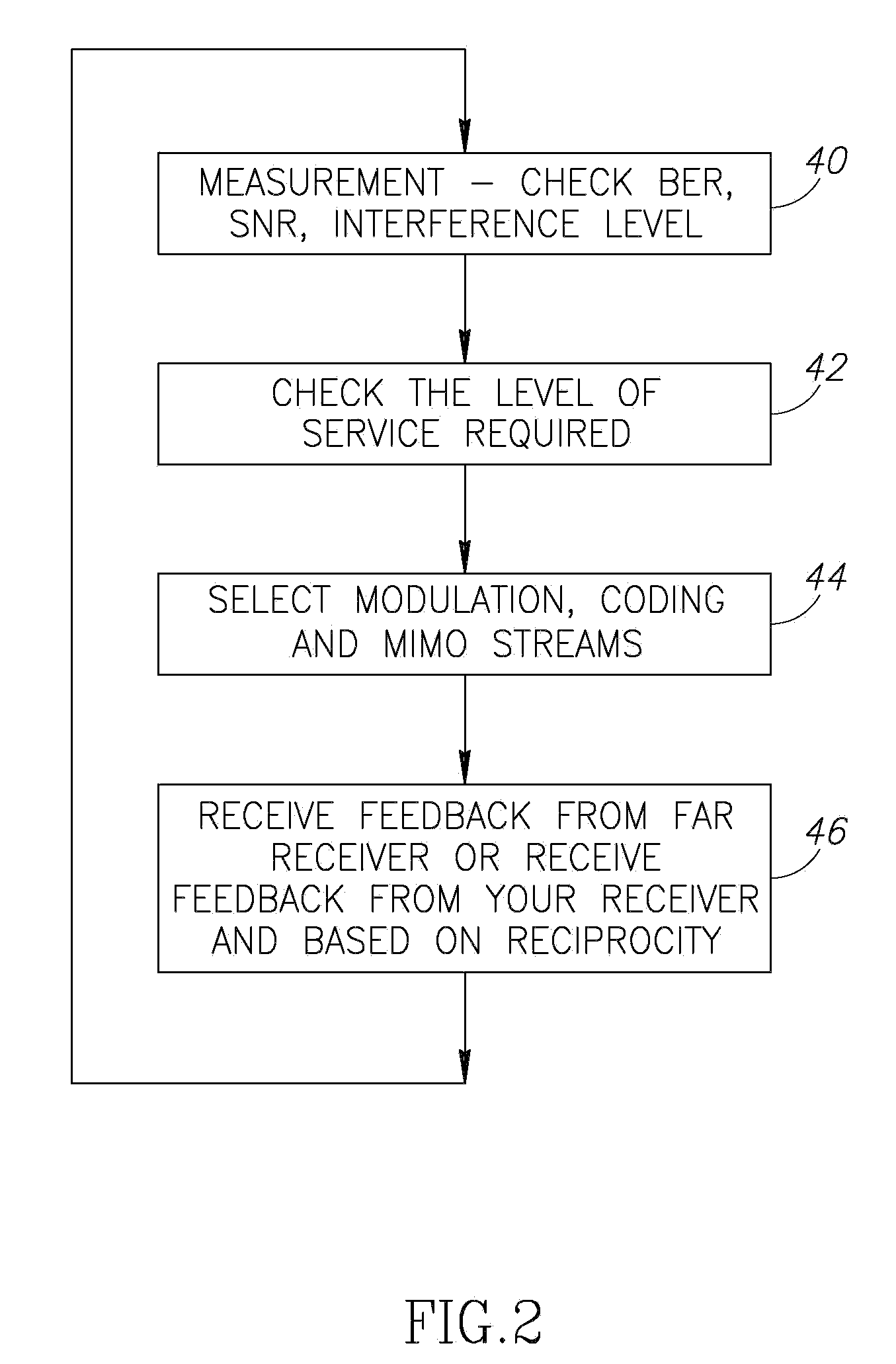Point to point communication method
- Summary
- Abstract
- Description
- Claims
- Application Information
AI Technical Summary
Benefits of technology
Problems solved by technology
Method used
Image
Examples
Embodiment Construction
[0030]The present invention relates to a point-to-point communication system between wireless nodes in a wireless network, particularly a next-generation mobile broadband wireless network, serving as an access network or as an internal backhaul network between the various nodes, i.e., base stations, relay stations, access points, etc. For purposes of the present application, all the access and backhauling descriptions refer to any of these possibilities of infrastructure devices. In the discussion that follows, an access network is the air interface network providing communications between access points (base or relay stations) and mobile terminals, defined by IEEE802.16e-2005 standardization (WiMAX), and a backhaul network is the air interface network providing broadband wireless interconnection between access points within the network.
[0031]According to one preferred embodiment of the invention, each node has a single controller for controlling and coordinating access and backhaul...
PUM
 Login to View More
Login to View More Abstract
Description
Claims
Application Information
 Login to View More
Login to View More - R&D
- Intellectual Property
- Life Sciences
- Materials
- Tech Scout
- Unparalleled Data Quality
- Higher Quality Content
- 60% Fewer Hallucinations
Browse by: Latest US Patents, China's latest patents, Technical Efficacy Thesaurus, Application Domain, Technology Topic, Popular Technical Reports.
© 2025 PatSnap. All rights reserved.Legal|Privacy policy|Modern Slavery Act Transparency Statement|Sitemap|About US| Contact US: help@patsnap.com



